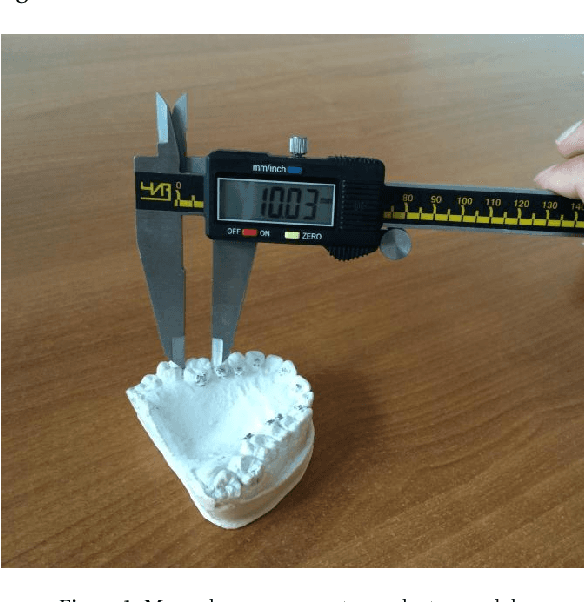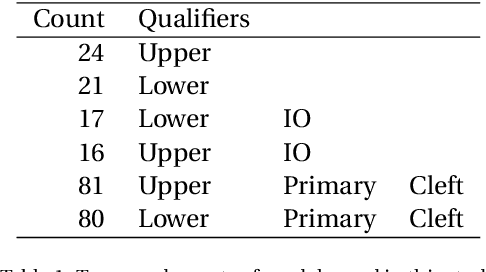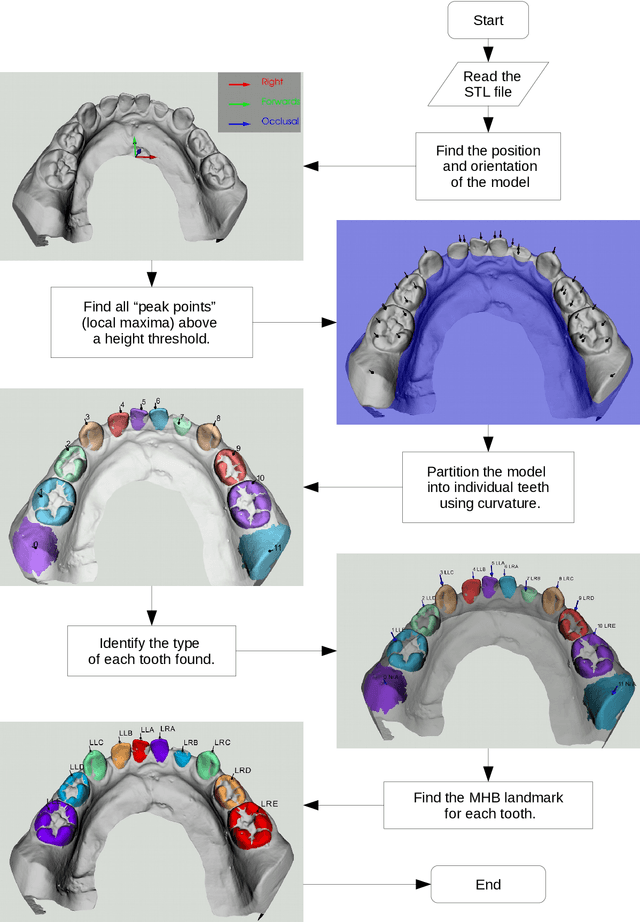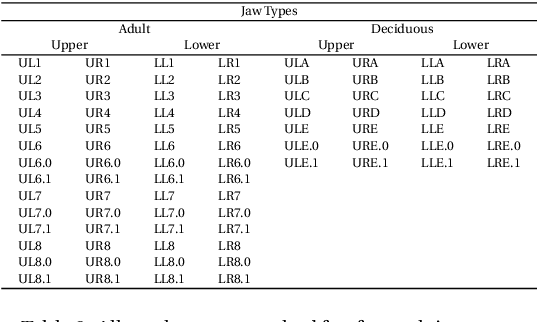Automatic Recognition of Landmarks on Digital Dental Models
Paper and Code
Dec 23, 2020



Fundamental to improving Dental and Orthodontic treatments is the ability to quantitatively assess and cross-compare their outcomes. Such assessments require calculating distances and angles from 3D coordinates of dental landmarks. The costly and repetitive task of hand-labelling dental models impedes studies requiring large sample size to penetrate statistical noise. We have developed techniques and software implementing these techniques to map out automatically, 3D dental scans. This process is divided into consecutive steps - determining a model's orientation, separating and identifying the individual tooth and finding landmarks on each tooth - described in this paper. Examples to demonstrate techniques and the software and discussions on remaining issues are provided as well. The software is originally designed to automate Modified Huddard Bodemham (MHB) landmarking for assessing cleft lip/palate patients. Currently only MHB landmarks are supported, but is extendable to any predetermined landmarks. This software, coupled with intra-oral scanning innovation, should supersede the arduous and error prone plaster model and caliper approach to Dental research and provide a stepping-stone towards automation of routine clinical assessments such as "index of orthodontic treatment need" (IOTN).
 Add to Chrome
Add to Chrome Add to Firefox
Add to Firefox Add to Edge
Add to Edge